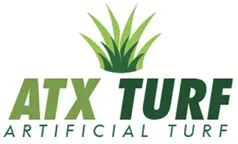Does Artificial Turf Get Hot? And How Hot Does it Get?
Published Feb 28, 2003

But, as your go-to resource for questions and answers on turf, we have summarized a few basic conclusions from these studies below and put them in layman’s terms.
Why does Synthetic Turf get Hot?
Artificial Turf is made of polypropylene fibers, or sometimes nylon fibers, which is essentially like plastic. This material, unlike natural grass, does not have moisture in it to keep it at lower temperatures in hot conditions. In addition, artificial turf can often be a darker shade of green and as we all know from 6th grade science, darker colors attract more heat.
It’s important to understand heat on turf is more of an issue in certain times of year and in different locations and is rarely an issue indoors or in shaded outdoor areas, such as covered batting cages. Summers in the northeast, it may be an issue in July and August. In the southwest, it can be hotter throughout the year.
Athletic Fields vs Residential Turf Heat
It is also important to understand the difference between athletic field turf and residential turf. Most athletic fields at High Schools, Colleges and Rec Leagues have black, rubber crumb infill in the turf for impact attenuation and to keep the fibers standing up straight. It is common to have 4 to 10 lbs per square foot of this black crumb rubber. This black crumb rubber attracts more heat than turf without the crumb rubber. Many studies done on the heat of turf are done by Sports Construction organizations measuring only turf with crumb rubber. These fields often measure 10 to 30 degrees higher than the comparable natural grass in the same location at the same time.
Residential Turf, on the other hand, rarely has black crumb rubber as it is not necessary to have such cushion in non-athletic environments. Second, no one wants to track these black pellets into their house from their yard. Residential turf generally measures at lower temperature than athletic fields, roughly 10 degrees lower, however, it can, and most likely will be hotter than a natural grass alternative, while concrete and asphalt surfaces can also run much higher.
Are some turfs cooler than other turfs?
These studies have concluded the lighter color turf, versus a black turf for example, will be several degrees cooler, however, it will still measure substantially hotter than natural grass.
Can Water be used to cool down turf?
Yes, watering the turf will help cool down the turf for a brief period of time. Artificial turf is naturally made to drain, so the water will either drain through the turf or evaporate in the sun, and the turf often comes back to the higher temperature around 20 to 30 minutes later.
Resources for further information on Artificial Turf Heat
Penn State College of Agricultural Sciences: Department of Plant Science
May 8, 2019 National Recreation and Park Association: Synthetic Sports Fields and the Heat Island Effect
Sept, 2016 Science Direct

0 Comments